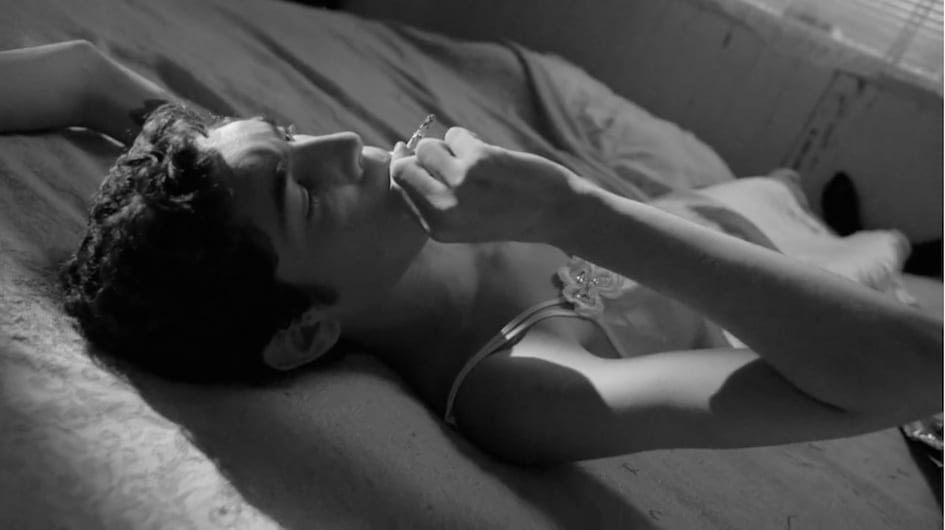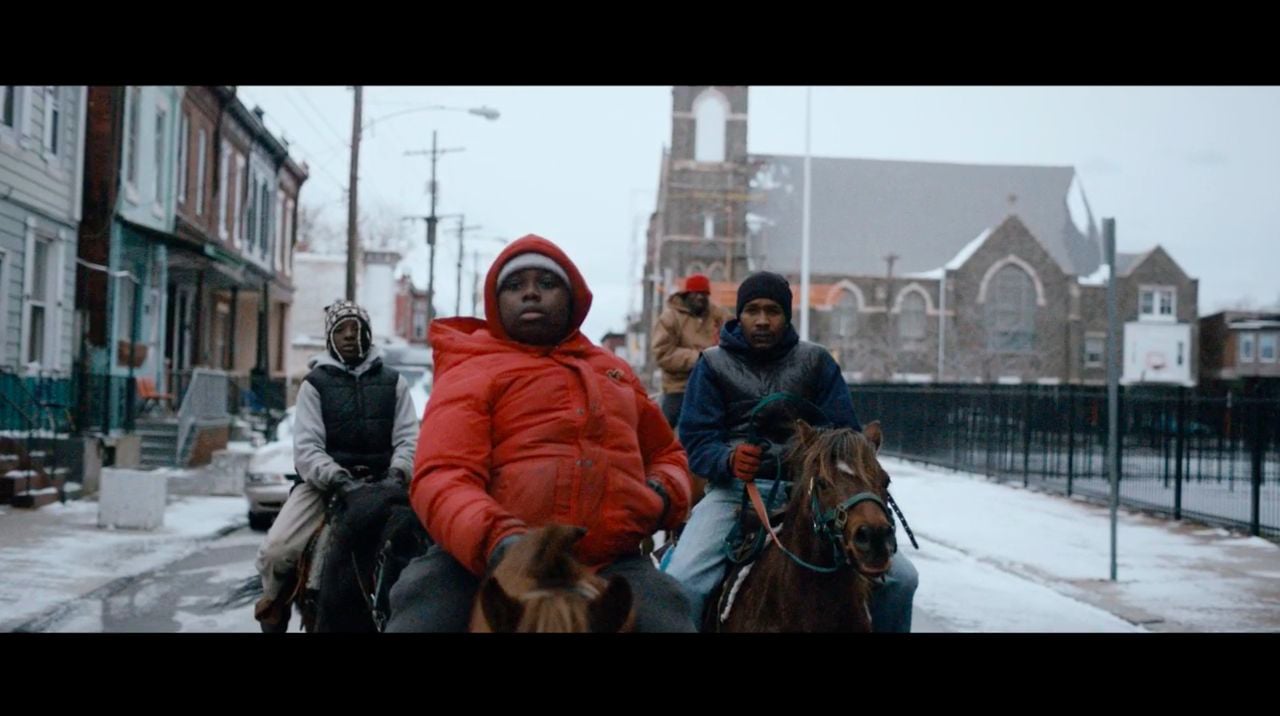You’re English but your films and videos are often rooted in the more unglamorous gritty American cities – New Orleans, Detroit for instance. How did this relationship come about and what compels your attraction to these places?
I think it’s a mixture of films that influence me, and also my own experiences growing up. From the age of 15-22 I was super into skateboarding, it was as an all-consuming part of life and it made me travel and look at cities in a different way. We would go on these epic road trips and stay in hostels and skate all day. Often it would take you to places that weren’t exactly glamorous.
You’d find spots in industrial estates or we’d make our own spots on the edge of town. We would sleep in our car for a few weeks, driving around Europe and live a really simple life and meet a load of interesting people along the way. It was good times. So I think there’s always been a draw for me to explore new cities. That’s what I enjoy most, its not always the grittiness, it’s just being somewhere new and that excitement of what’s around the next corner. I’ve just gone from scouting skate spots to scouting locations.
How do you discover the cultural scenes and decide they are relevant to the specific tracks that you are working on – I’m thinking in particular of how you caught the spirit of the young Philadephian horseback riders for Rudimental’s Feel The Love or the New Orleans posse in Jake Bugg’s There’s a Beast and We All Feed it.
It was a pretty different process for each. For Rudimental the concept came from Augusto Sola, a brilliant Creative Director at 101, so I can’t take credit for that, but it was really from meeting the riders that informed the tone of the video. Initially it was more of a gimmick, like this idea of hip-hop horse riders. But meeting the guys I could tell how much they loved their horses and I felt I had to be truer to their lives. They put everything into their horses, there was no way I was going to ‘pimp’ them out. The track itself has got this really soulful and positive feel so it just made sense for me to capture it in a more introspective documentary way.
Jake Bugg was more fabricated. None of the locations or scenes were tied to what the guys would normally do day-to-day. We street cast the main group together but brought in a younger actor to form a new crew. We re-styled them after a trip to the thrift store and then started shooting. Their attitudes fit the role I was looking for perfectly and they were a load of fun to work with. I gave them a list of things I wanted them to do and they were onboard with it all.
How do you go about connecting with the people you film?
I try to hang out with them before the shoot if I can, not really talking about the film but just getting to know them and them getting to know me. I try to feed their personality back into the script if I can.
The main thing for me is that there’s no stress on set. I don’t get people losing their shit. That stress feedbacks onto the people in front of the camera. They’ll be like “I must be doing something wrong…”. If something’s not working it’s always my fault and I let them know that. I think that helps build up trust between me, and the people I’m shooting.
There’s almost a feeling of guerrilla filming – albeit with excellent production values – to your work. Can you describe a shoot please – Do you use only natural lighting? What’s your camera of choice? Do you favour stedicam or hand-held?
I do use a lot of natural light. Not exclusively, its not that I’m against lighting but with a promo in particular the speed of shooting available light really helps.
But it’s something I’ll discuss a lot with the DP before we shoot so we can plan what to shoot when.
My shooting process is quite freeform and instinctive. I hate standing away from the camera on a separate monitor, I like to run around with a little handheld monitor and be next to the camera. I once ran into a lamp post and bruised a rib like that.
It’s fun finding moments of gold that occur within a scene. I really don’t like breaking a scene down shot by shot, it just never gets the same result for me personally.
I shoot Alexa on most projects. RED if I want something smaller to run around with. I don’t think either look that great compared to film. It’s just the best digital solution we have at the moment. I’ve shot a couple of things on film which I love. Its fun to play with different formats. Hi-8 and VHS with a servo zoom. Mini-DV is always close to my heart.
Steadicam vs handheld… Everything has it’s place but I’m all about the handheld. Good handheld is hard though…
Is your production process organic – to what extent have you pre-planned the shoot and what you’ll be shooting? Does chance play a big role in your videos? Does the narrative come together in the edit?
There’s always a plan. And then a backup plan if something doesn’t work. And then another plan if that doesn’t work. Chance can always throw you something. For example with Rudimental it snowed the night before the shoot, which forced us inside for our first setup. We got some of my favorite portraits in the film because of it. We moved around their whole living room so we could sit the guys by a window, the light was super nice. So it’s really a case of making the most of the time you have with the crew and cast. Don’t be sitting there waiting for something to happen.
As far as narrative it’s something I tend to write in a linear way on the page and then find more interesting ways to tell in the edit. Normally I will block some scenes that have been written for a specific moment in the song then find what works best around that.
What was behind your decision to shoot in black and white for the Jake Bugg video?
Mary Ellen Mark photographs were a strong influence. And old Toy Machine videos. And Jay-Z 99 Problems too. There was something bold in the treatment layout when I put black and white photos alongside really bright animated GIFs. So we shot everything on an 18mm lens with a yellow filter to give us a rich contrast. I really wish we shot on 35mm film but it wasn’t to be. Jackson Hunt did an amazing job with the photography. I nearly wavered and asked to shoot some long lens from a car but he fought me on it and I’m glad we stuck with the wide-angle throughout.
Can you tell us please about this production – what were the main challenges?
The main challenge was really trying to shoot the amount of scenes I wanted in a short space of time. We had around 5 days prep and a 3 day shoot, which I understand is a relative luxury for most music videos. But finding the hero cast wasn’t happening at first. There’s some hilariously bad casting tapes. It got to a point that I was really worried that we would have to put the shoot back because we hadn’t found the right people.
But then we found the ‘Forever Dumb’ crew skating under a freeway. They came into casting and we hit it off. We talked about how they all met, their future plans, skating and it fell into place… these were our guys. We paired a young actor called Bryce in their crew to give it a more interesting dynamic.
Filming on the Bayou was tricky. Just the noise of those fan boats make it a nightmare to communicate. Getting an alligator was surprisingly easy. As were the guns. Me and the producer Denna were led onto the back of a lorry in an industrial estate and were showcased the ‘Boom Room’, which was basically a candy store for guns. The guy renting them really loved his guns. Denna haggled a cash deal for some pistols and we walked off with them in a Tupperware box. I’d never even held a gun before so it was all a bit surreal.
The edit must have taken forever, was there a lot of footage that didn’t see the final cut?
We did have a load of footage but the edit actually came together pretty quickly. The 90 second track helped. Dan Sherwen did an amazing job to keep it fluid. We wanted the viewer to be continually fed new imagery, so it was like a big jigsaw puzzle finding what worked against each other. There was a bunch of stuff that we shot that didn’t make it, I try not to be too precious and let scenes go if they aren’t working.
You’re no stranger to viral success – your Rudimental film has racked up 38 million, 38 MILLION HITS on YouTube alone. What do you think it was about that film that people connected with?
Haha. I don’t know really. It’s weird, 38 million is a crazy number. 1 million is a crazy number. I’ve not really thought about why it got all the clicks, maybe it’s because it’s human, its got an honesty that I think people like? And the song is a massive tune which always helps.
You portray real lives. Are you interested in writing and filming fictional scripts?
Totally. I see everything I do as fictional; I just try and blur the line of what is real and not. But I definitely have the urge and desire to move into longer-form work. Writing is something I’ve only started to enjoy and develop in the last few years so I feel like I’m finally ready to take that next step.
You’ve now directed a couple of cracking films for clients – including Adidas and Apollo. Does your creative process differ much for filming music videos?
It does and it doesn’t. I’m trying to make them as similar a process as possible. I think the discipline that goes into a commercial is important. You work with much bigger crews and have multiple departments to handle.
I don’t tend to storyboard a music video, I will just write a shot list. There’s less people to communicate with so it’s easier to work that way. With a commercial I shoot the board then try and shoot more freeform. Most clients are cool if you explain your approach before hand. As long as you get what they are expecting first then it seems to work.
In a commercial you have to justify each decision to someone. So it’s just learning to be better at explaining why you are doing what you are doing. Which can be exhausting sometimes as you just want to say ‘because it’s better’.
Are you self-taught or did you go to film school?
I did this really technical course where I learnt about lighting studios and vision mixing. I didn’t really enjoy it. It was like it was designed for students 15 years ago trying to get into the BBC.
When I left I was self shooting and editing so it’s definitely more self taught than school taught. But I’m badass at three-point lighting an interview if I ever need to.














